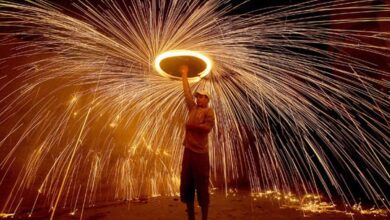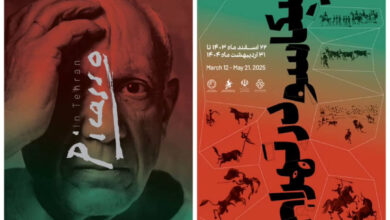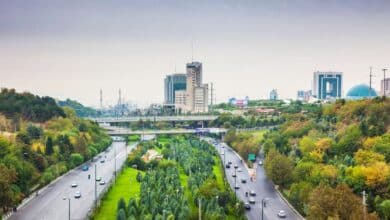Glassware and Ceramic Museum of Iran (Abgineh Museum)
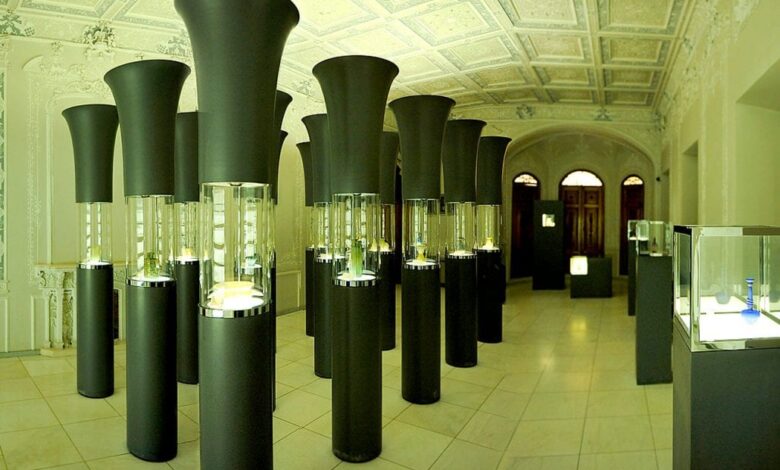
Glassware and Ceramic Museum formerly known as Abgineh opened in 1980, the museum is housed in the 1915 mansion of a former prime minister in Reza Shah’s government, and from 1953—60 it functioned as the Egyptian Embassy, so the building itself has architectural merit.
Quick Facts Glassware and Ceramic Museum of Iran
Name: Glassware and Ceramic Museum of Iran (Abgineh Museum)Location: Si Tir Street, Tehran, IranBuilding History: Housed in a historic mansion dating back to the 1920s, originally owned by Qavam al-Saltaneh, a prominent Iranian politician.Opened as Museum: 1980Collection:
- Showcases glassware and ceramics from the second millennium BCE to contemporary pieces.
- Includes ancient Persian artifacts as well as pieces influenced by Islamic art.
Architecture:
- Combines Persian and European architectural elements, reflecting the Qajar-era aesthetic.
- Features stunning wooden staircase and intricate plasterwork.
Notable Exhibits:
- Ancient clay pots, enamel work, and delicate glass vessels from prehistoric Iran.
- Rare Islamic-era ceramics with intricate designs.
Curation: Organized chronologically and thematically, offering a journey through Iran’s glass and ceramic artistry.Accessibility:
- Open to visitors daily, with guided tours available.
- Centrally located in Tehran, near other cultural landmarks like the National Museum of Iran.
There are two floors of displays in the Abgineh Museum that include dramatic ‘Nishapur’ slip-painted ceramics Of the early medieval period, glass works from the 12th—13th century, known as the Golden Age of glass-making in Iran, lustreware from the Gorgan and other excavations, 14th-century pottery from Takht-e Soleyman and some later Safavid and Qajar ceramics.
Most of the glass, however, some 260 pieces, is exhibited on the ground floor on the Glassware and Ceramic Museum.
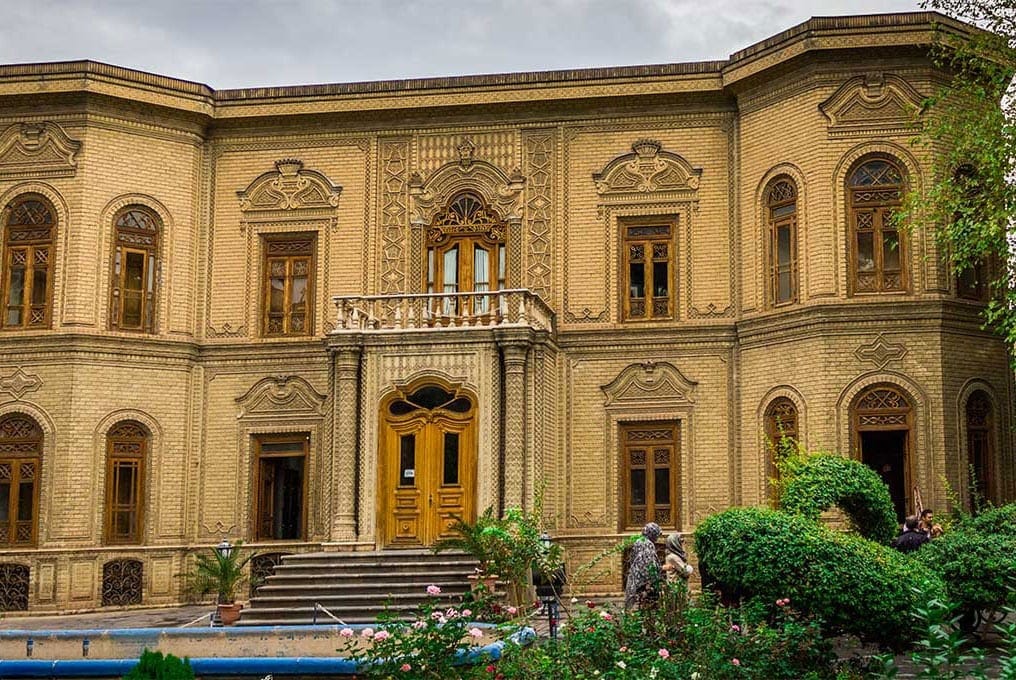
Contents
Different Sections of the Abgineh Museum
The first floor of the Ceramic Museum of Iran is connected to the second by wooden steps in Russian style. Prior to the building’s transformation into the Egyptian Embassy, the entrance of the museum was dome-shaped but was later flattened.
Objects exhibited in the Abgineh Museum belong to a span of time beginning from pre- Islamic period up to contemporary Iran. There is plenty of exquisite plasterwork performed by Iranian masters on the interior walls of the building. On the first floor, at the entrance of the museum, the hall showcases the location of archeological sites under excavation. On the walls are maps showing ancient regions on the Iranian plateau as well as a useful timetable of ancient civilizations.
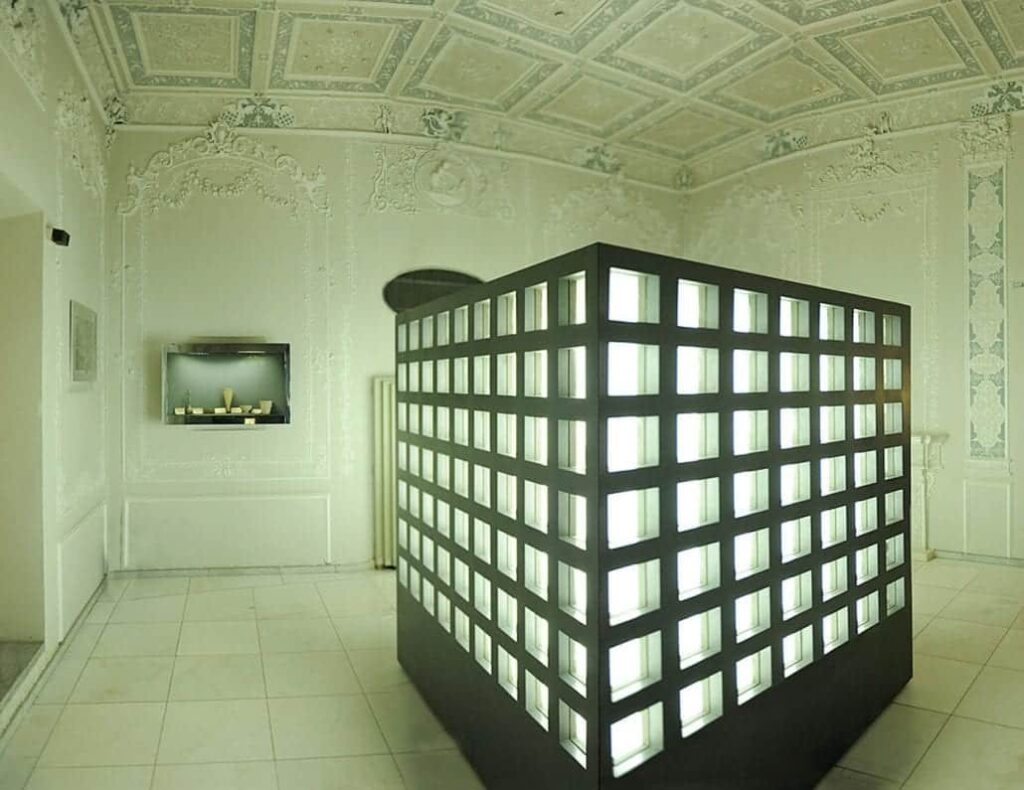
The Glassware and Ceramic Museum objects, in general, can be divided into five categories, which are displayed in different halls.
Enamel and Crystal Gallery
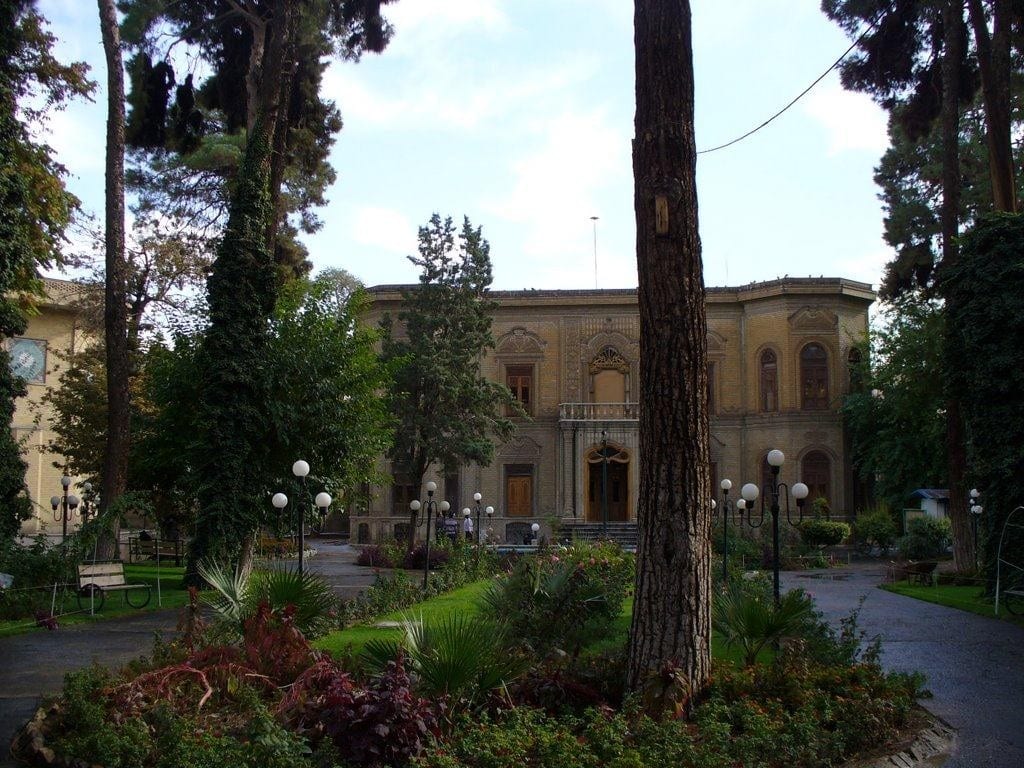
Potteries in the Enamel Section consist of samples of plain clay vessels having angular and animal patterns.
On some artifacts, the early examples of glass glazes dating back to the 3rd millennium BC can be found.
The collection of Chogha-Zanbil temple glass tubes as well as opaque perfume holders, ornaments and seals exhibited belong to the first and second millennium BC.
In the Crystal Section, Achaemenid and Parthian cut crystal vessels and bottles are displayed for visitors. Various vessels of Sasanian and post-Islam period are also added to this collection bearing molded, applied, pressed and cut decorations.
Nacre and Gold Gallery
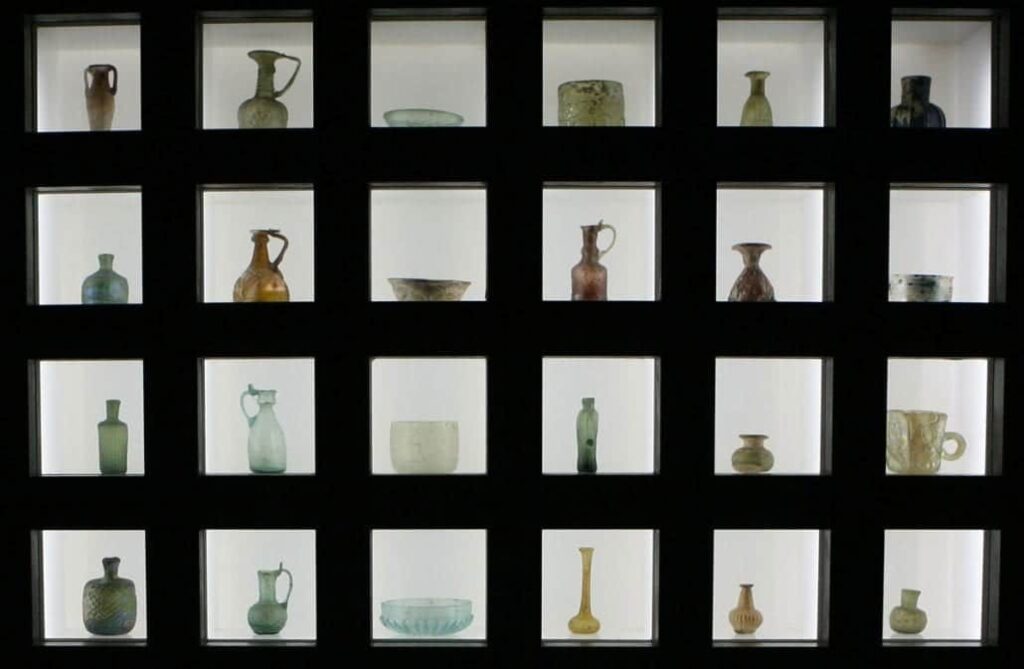
The evolution of Sassanian arts and techniques are observed in the Nacre gallery. Some samples of 9th to 13th centuries AD are also exhibited in this gallery. In fact, the flourishing period of glassware and pottery is presented here. Artifacts presented in the Gold Gallery consist of enameled and luster vessels of the 10th to 13th centuries.
The inscriptions are generally expressions, good prayers and poems attributed to Nezami and Ferdowsi. Patterns are mainly human figures in various ceremonies and animals, especially birds.
Lapis-Lazuli Gallery
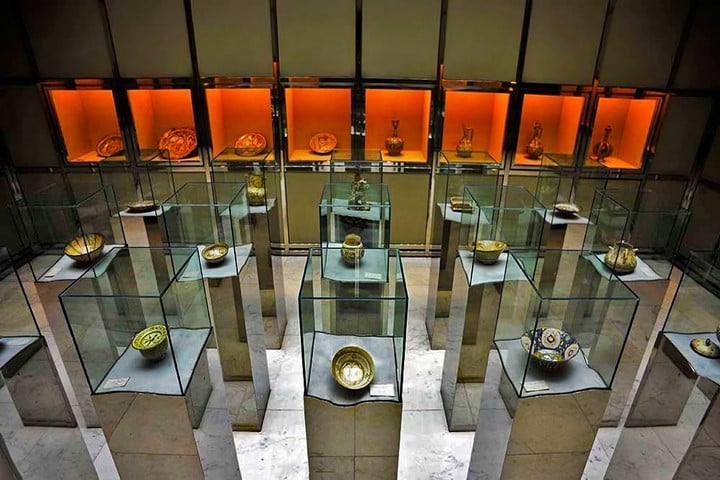
Following the damage suffered by the glass and pottery-making centers in Iran, Safavid king, Shah Abbas I, initiated the revival of lapis-lazuli and enhanced it with the help of Chinese and Italian artists.
The objects of these two galleries show marked changes in the forms and decorations of glassware and pottery artifacts using lapis-lazuli stones. Vases, sprinklers and ewers in lapis lazuli and light orange colors belong to Shiraz and Isfahan.
There are also crystal vessels belonging to the 18th and 19th centuries from Europe exhibited in a separate showcase.
A library, located in the northwest section of the gardens surrounding the Glassware and Ceramic Museum, has approximately 3,000 books in Farsi and English on archeology, history and arts for students and researchers.
Glassware and Ceramic Museum formerly known as Abgineh opened in 1980. Objects exhibited in this museum belong to a span of time beginning from pre- Islamic period up to contemporary Iran.
- Tehran, Si Tir St, Iran
- +98 21 6670 8153
- www.glasswaremuseum.ir
- 9am-4.30pm Tue-Sun, to 6pm summer
Conclusion
The Glassware and Ceramic Museum of Iran (Abgineh Museum) is more than just a collection of artifacts; it is a journey through the artistic evolution of a civilization that has mastered the art of storytelling through ceramics and glass. From the ancient clay vessels of prehistoric Iran to the intricate Islamic-era designs, the museum offers a comprehensive look at the ingenuity, creativity, and cultural significance of these mediums.
Housed in a stunning historical mansion, the museum not only showcases its collection but also embodies Iran’s architectural and artistic heritage. Whether you’re an art lover, a history enthusiast, or simply a curious traveler, the Abgineh Museum is a space that invites you to reflect on the timeless beauty and craftsmanship of Persian art.
A visit to this museum is a step into the heart of Iranian culture, a celebration of its artistic legacy, and a testament to the enduring allure of human creativity.
Read More
